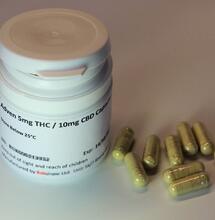PH! WTF?

PH must be one of the most widely discussed subjects amongst growers and also one of the most often blamed factors when a grow starts to go bad. But what does PH actually measure? Why is it important? Is there a way to grow that gets you around having to adjust PH of your nutrient solution?
PH must be one of the most widely discussed subjects amongst growers and also one of the most often blamed factors when a grow starts to go bad. But what does PH actually measure? Why is it important? Is there a way to grow that gets you around having to adjust PH of your nutrient solution?
PH must be one of the most widely discussed subjects amongst growers and also one of the most often blamed factors when a grow starts to go bad. But what does PH actually measure? Why is it important? Is there a way to grow that gets you around having to adjust PH of your nutrient solution?
So, WTF is it?
| Invest in a digital PH meter for easy and accurate readings |
Put simply, the PH scale is used to measure how acid or alkali a solution is compared to pure water. When you measure PH, you are actually measuring the concentration of hydrogen ions in a solution compared to distilled water (pure water). The term PH stands for ‘Potential Hydrogen’. The PH scale ranges from 0 to 14, with a reading of 7 being neutral. So, pure water is classed as 7 (neutral) and when you test the PH of a solution you are comparing the amount of hydrogen ions present compared to this neutral point.
All readings below 7 are considered acidic and all readings above 7 are considered alkali (although, the technical term is that the solution is ‘basic’ if it has a PH of over 7, but don’t worry about that!).
Every reading (or number) on the scale represents an increase or decrease in concentration to a multiple of 10. This means that a solution with a PH of 6 is 10 times more acidic than a solution with a PH of 7. A solution with a PH of 4 is a 1000 times more acidic than a solution with a PH of 7. This is called an exponential logarithmic scale... but, again, don’t worry too much about that!
Having an understanding of the differences between numbers is important for a grower. If you thought it was a pain in the arse to keep your PH within a scale of between 5.8 and 6.8 just remember that the fluctuation of 1 point equates to 10x the acidity or alkalinity.
You should be able to handle that, right?
So, why is it important for growing?
Quick and simple answer is that plants can only absorb the full spectrum of nutrients that they require if they are delivered within a certain PH range.
When the PH drops too low the availability of phosphorus decreases significantly, followed by (in no particular order); nitrogen, magnesium, calcium, potassium and sulphur. When the PH rises too high the availability of iron decreases.
The optimum PH range differs depending on your growing method. When growing in soil the ideal range is just below neutral, between 6 and 7, when growing in hydro or coco the ideal range is slightly lower, between 5.5 and 6. Unlike in soil, the PH in a hydroponic solution can fluctuate quickly. This is because soil contains microbial life which helps to stabilise PH, whereas there will be fewer - if any - microbial life present in a hydroponic solution.
How to test PH
This is fairly straightforward, you use a PH tester from your local grow shop! In all seriousness, it’s better to use an accurate tester from your hydro store than a cheap kit. First off, forget litmus paper from when you were in school, that was fine for trying to find the difference between lemon juice and baking soda, but it won’t cut it for fine tuning the PH levels for your beloved plants.
Reagent tests are cheap and very accurate. These involve taking a small sample of the nutrient solution in a test tube and adding a couple of drops of reagent to it. The colour of the sample will then change and you can match it against a colour chart. Quick, simple and cheap - the reagent kits are just few quid from the grow shop and will last you a full grow.
Digital PH meters are your second, more expensive (upwards of £35-£40), but ultimately more accurate option. They involve placing a measuring probe into the nutrient solution; the meter then measures the PH and displays it as a reading on a digital display. Nice and simple. The meters do require some maintenance to keep them operating smoothly - regular cleaning of the probe and calibrating the meter to a set PH point (usually 7) a few times throughout the grow will need to be done. But it’s worth the effort.
Changing PH
Should you need to change the PH of your solution there are some fairly inexpensive options available from your grow shop. PH down is usually supplied in the form of phosphoric acid - this will also add an extra dose of phosphor to your solution. Some of the more advanced PH down’s available are a blend of several acids, for example nitric, sulphuric and phosphoric, these prevent too much of an imbalance of one element from occurring.
PH up can be given as potassium hydroxide which will increase the potassium levels in a solution as well as increasing PH. Another good option is potassium silicate, which increases PH as well as giving a nice dose of silicon to the plants.
Let it ride!
Don’t feel like you have to keep your PH bang on a certain number - in recirculating systems this will be pretty much impossible. It’s certainly acceptable to allow the nutrient solution to ride between 5.8 and 6.8, in fact it is fairly common for PH to drift up and down as the plants uptake and deposit certain elements into and out of the solution. Constantly using PH up and down to ‘fix’ your PH at 6, will do more harm than good as you are unbalancing your nutrient solution every time you adjust PH.
| Potassium silicate is a great PH up |
PH pointers
- Check the PH of your tap water before adding your nutrients to reveal your ‘background’ PH.
- The majority of nutrients and additives on the market will affect PH. Add them to your water and mix well before checking PH and feeding your plants. Most base nutrients will bring your PH down, so don’t worry if your background PH seems high. It’s important to check it after you’ve added the nutrients.
- Temperature affects the PH of a solution. It rises in colder temps and lowers in warmer temps. ALWAYS try to take your PH readings at a similar time in the day; otherwise the fluctuations could just be down to the temperature of the solution. For example, pure water has a PH of 7 at 25 degrees Celsius, a PH of 6.5 at 50 degrees and a PH of 7.5 at 0 degrees.
- Let it ride! Allowing the PH to fluctuate across the useful range will provide your plants with availability of all the elements they need.



